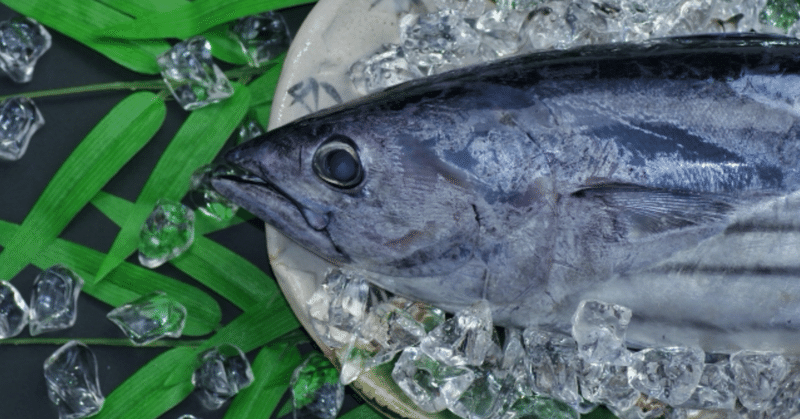
【Koyomi】 April 16, 2024
Seasonal food|Bonito (Katsuo) 旬の食べ物|鰹(カツオ)
Today, let's delve into the deeply rooted aspect of Japanese culinary culture focusing on "Bonito" (Katsuo). Bonito is divided into "Early Season Bonito" and "Late Season Bonito" based on the season, each with distinct characteristics.
今日は、日本の食文化に深く根差す「鰹(カツオ)」に焦点を当てたいと思います。鰹はその旬によって「初鰹」と「戻り鰹」に分けられ、それぞれ異なる特徴を持っています。
Early Season Bonito (Spring Bonito)
The early season bonito, also known as "Hatsu-gatsuo" or "Agari-katsuo," is caught between March and May. These fish are characterized by firm flesh, less fat, and smaller size, making them easier to eat even for those who typically dislike fish. Their firm texture offers a delightful chewiness. Historically, early season bonito was so prized that there were sayings about going to great lengths to eat it, reflecting its status as a harbinger of good fortune.
初鰹(春の鰹)
3月から5月にかけて水揚げされる「初鰹」は、「上り鰹」とも呼ばれています。この魚は身が引き締まり、脂の乗りが少なく、サイズが小さいことが特徴で、魚が苦手な人でも食べやすいとされています。身のしまりが強く、噛みごたえが楽しめます。歴史的にも初鰹は非常に重宝され、縁起ものとして位置づけられていたほどです。
Late Season Bonito (Autumn Bonito)
Caught between September and November, the late season bonito, or "Modori-gatsuo" and "Kudari-katsuo," have increased in size and fat content due to their diet. The fatty underbelly is often compared to the toro of tuna, earning them nicknames like "Fat Bonito" or "Toro Katsuo." Despite concerns about their higher fat content, which can be up to ten times that of early bonito, their high protein and low calorie nature make them a healthy choice.
戻り鰹(秋の鰹)
9月から11月にかけて水揚げされる「戻り鰹」は、「下り鰹」とも呼ばれ、餌を食べて大きく脂の乗った鰹です。脂がたっぷりの腹身は、マグロのトロに例えられることもあり、「脂鰹」や「トロ鰹」という別名で呼ばれることもあります。脂質が多いことに対する懸念もありますが、高タンパクで低カロリーなため、健康的な選択肢です。
この記事が気に入ったらサポートをしてみませんか?
